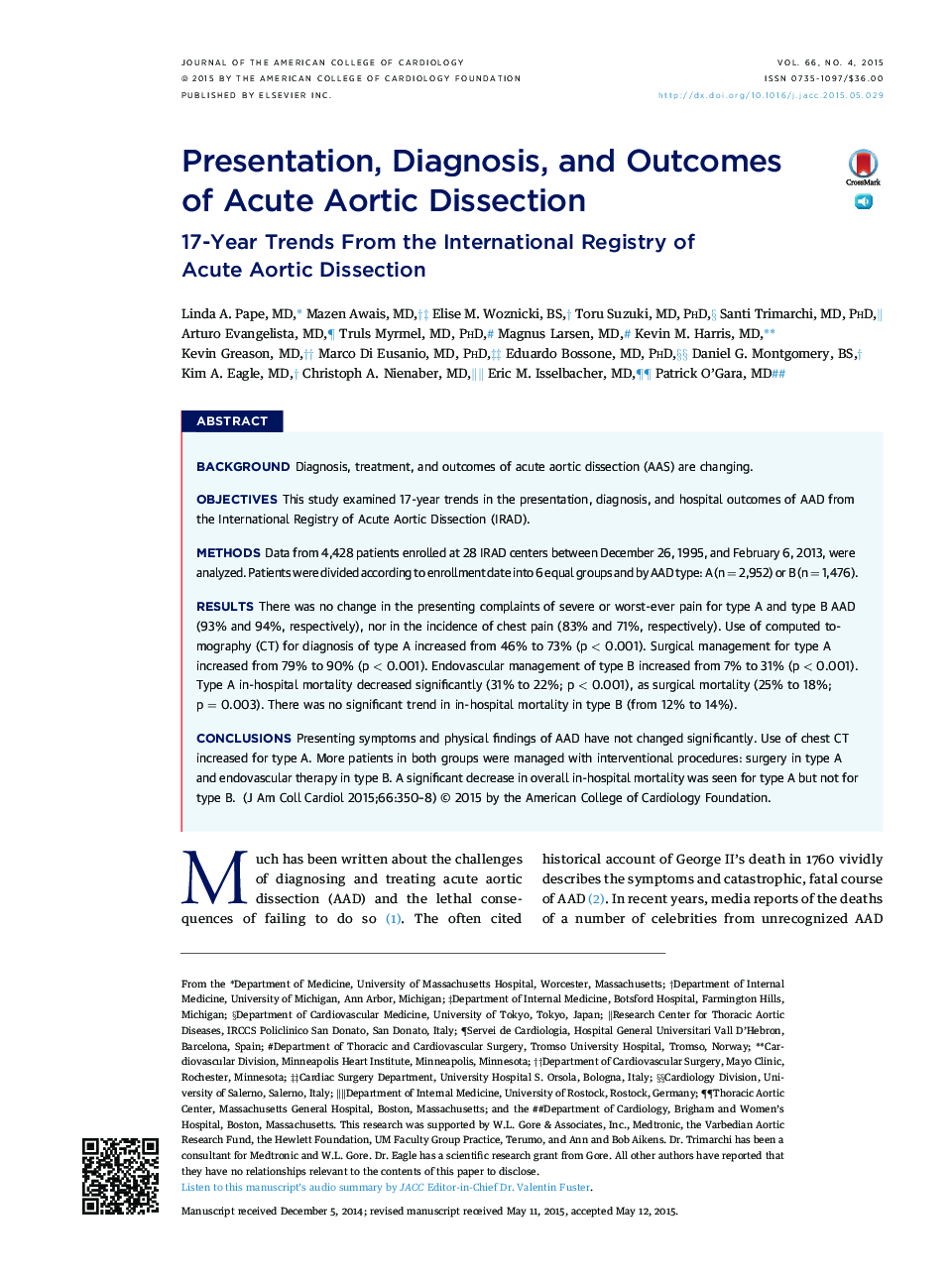| Article ID | Journal | Published Year | Pages | File Type |
|---|---|---|---|---|
| 2943949 | Journal of the American College of Cardiology | 2015 | 9 Pages |
BackgroundDiagnosis, treatment, and outcomes of acute aortic dissection (AAS) are changing.ObjectivesThis study examined 17-year trends in the presentation, diagnosis, and hospital outcomes of AAD from the International Registry of Acute Aortic Dissection (IRAD).MethodsData from 4,428 patients enrolled at 28 IRAD centers between December 26, 1995, and February 6, 2013, were analyzed. Patients were divided according to enrollment date into 6 equal groups and by AAD type: A (n = 2,952) or B (n = 1,476).ResultsThere was no change in the presenting complaints of severe or worst-ever pain for type A and type B AAD (93% and 94%, respectively), nor in the incidence of chest pain (83% and 71%, respectively). Use of computed tomography (CT) for diagnosis of type A increased from 46% to 73% (p < 0.001). Surgical management for type A increased from 79% to 90% (p < 0.001). Endovascular management of type B increased from 7% to 31% (p < 0.001). Type A in-hospital mortality decreased significantly (31% to 22%; p < 0.001), as surgical mortality (25% to 18%; p = 0.003). There was no significant trend in in-hospital mortality in type B (from 12% to 14%).ConclusionsPresenting symptoms and physical findings of AAD have not changed significantly. Use of chest CT increased for type A. More patients in both groups were managed with interventional procedures: surgery in type A and endovascular therapy in type B. A significant decrease in overall in-hospital mortality was seen for type A but not for type B.
